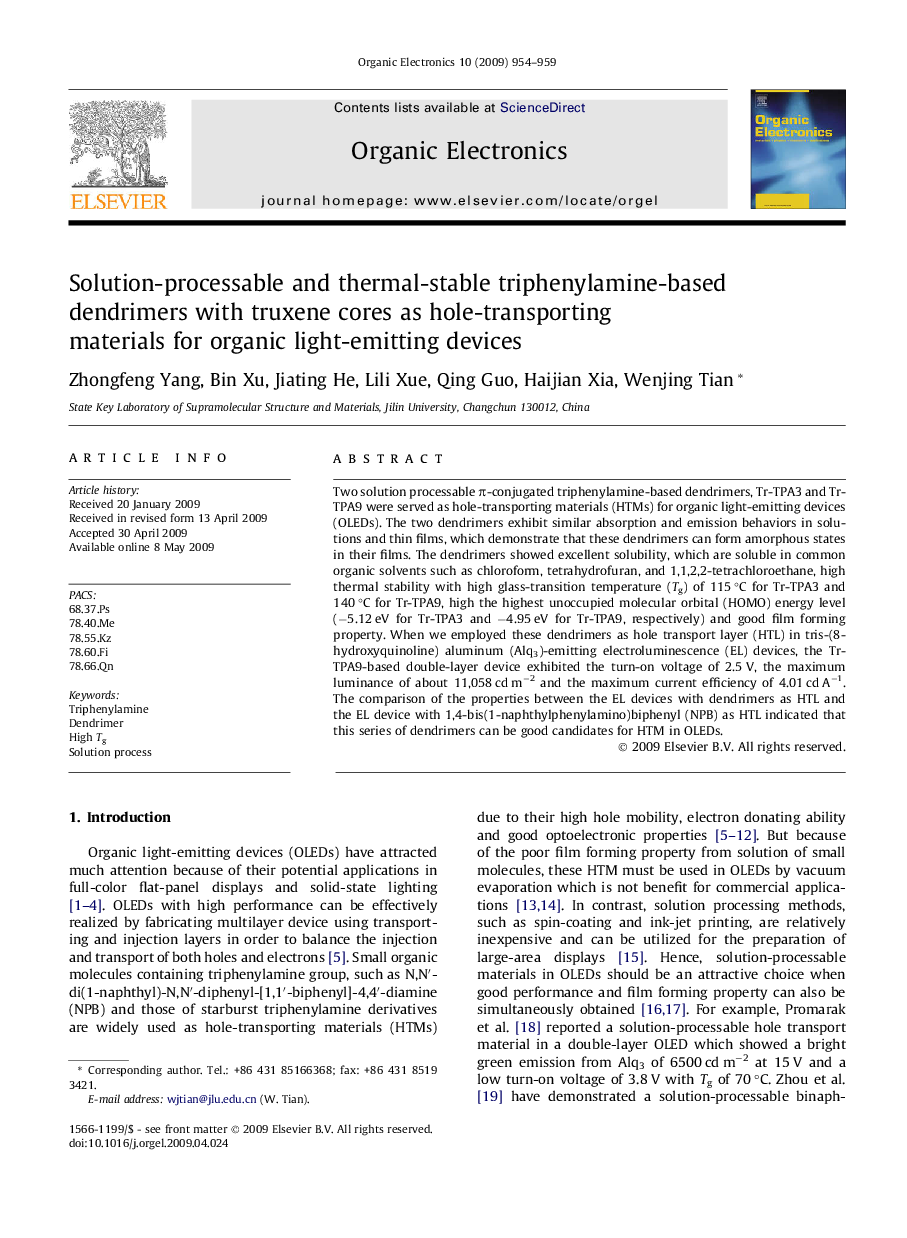| Article ID | Journal | Published Year | Pages | File Type |
|---|---|---|---|---|
| 1268340 | Organic Electronics | 2009 | 6 Pages |
Two solution processable π-conjugated triphenylamine-based dendrimers, Tr-TPA3 and Tr-TPA9 were served as hole-transporting materials (HTMs) for organic light-emitting devices (OLEDs). The two dendrimers exhibit similar absorption and emission behaviors in solutions and thin films, which demonstrate that these dendrimers can form amorphous states in their films. The dendrimers showed excellent solubility, which are soluble in common organic solvents such as chloroform, tetrahydrofuran, and 1,1,2,2-tetrachloroethane, high thermal stability with high glass-transition temperature (Tg) of 115 °C for Tr-TPA3 and 140 °C for Tr-TPA9, high the highest unoccupied molecular orbital (HOMO) energy level (−5.12 eV for Tr-TPA3 and −4.95 eV for Tr-TPA9, respectively) and good film forming property. When we employed these dendrimers as hole transport layer (HTL) in tris-(8-hydroxyquinoline) aluminum (Alq3)-emitting electroluminescence (EL) devices, the Tr-TPA9-based double-layer device exhibited the turn-on voltage of 2.5 V, the maximum luminance of about 11,058 cd m−2 and the maximum current efficiency of 4.01 cd A−1. The comparison of the properties between the EL devices with dendrimers as HTL and the EL device with 1,4-bis(1-naphthylphenylamino)biphenyl (NPB) as HTL indicated that this series of dendrimers can be good candidates for HTM in OLEDs.
